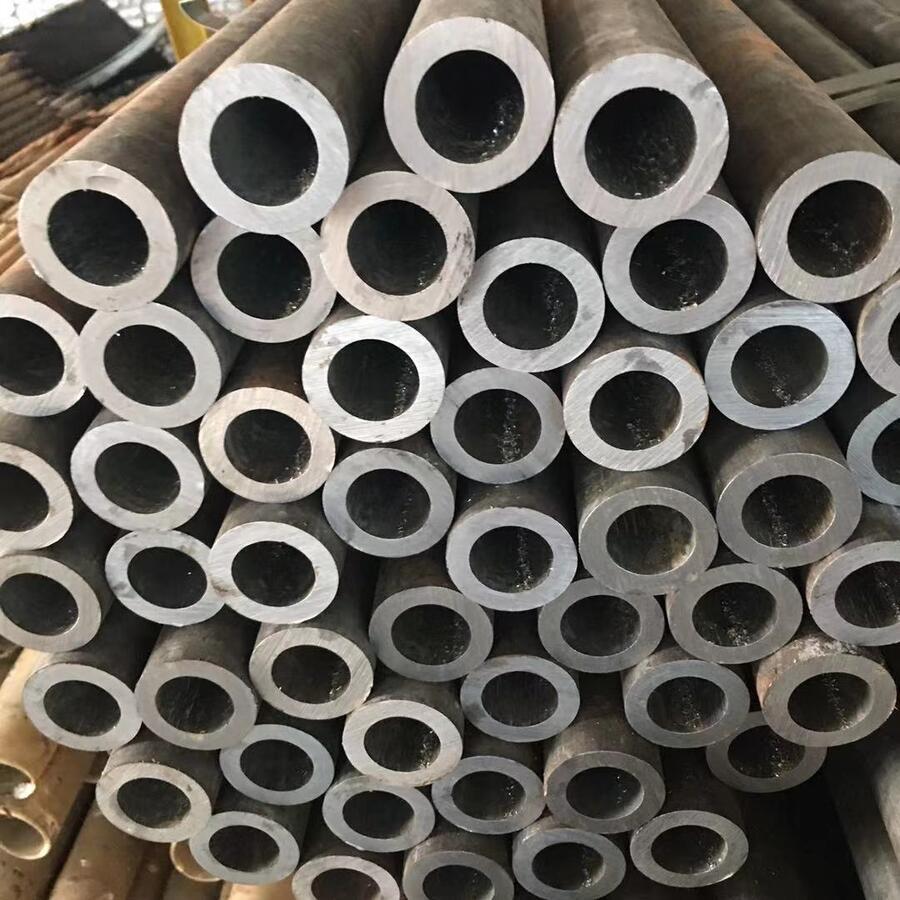ال مطحنة إعادة درفلة الصلب يمثل أحد أكثر تقنيات إعادة تدوير المعادن كفاءة في علم المعادن الحديث. تقوم هذه المرافق المتخصصة بإعادة معالجة خردة الصلب أو منتجات الصلب شبه المصنعة إلى منتجات نهائية عالية الجودة مثل القضبان, قضبان, الزوايا, والقنوات. على عكس إنتاج الصلب الأولي, مصانع إعادة الدرفلة تعمل في درجات حرارة أقل بكثير (عادة 1100-1250 درجة مئوية), الحفاظ على الطاقة مع الحفاظ على سلامة المواد من خلال المعالجة الميكانيكية الحرارية الدقيقة.
عملية إعادة التدوير: من الخردة إلى العناصر الهيكلية
حديث عمليات إعادة درفلة الفولاذ ابدأ بخردة الفولاذ التي تم فرزها بعناية والتي تخضع لفحص صارم للجودة. ثم تتقدم المادة عبر عدة مراحل حرجة:
1. تحضير البليت: يتم صهر خردة الفولاذ في أفران الحث الموفرة للطاقة (مثل تلك من شركة هاني للمعادن) ويتم صبها في قوالب معدنية قياسية مقاس 100 × 100 مم إلى 130 × 130 مم بأطوال 6-12 متر.
2. تقنية إعادة التسخين: تدخل الكتل المعدنية إلى أفران من النوع الدافع أو أفران شعاع المشي حيث يتم تسخينها بشكل موحد إلى درجات حرارة متدحرجة. تشتمل المطاحن المتقدمة على تقنية الموقد المتجدد لتقليل استهلاك الوقود بنسبة تصل إلى 30% مقارنة بالأنظمة التقليدية.
3. المتداول الدقة: تمر القضبان الساخنة عبر سلسلة من حوامل اللف التي تمت معايرتها بدقة. يمر الانهيار الأولي من خلال مصانع التخشين مما يقلل من مساحة المقطع العرضي, تليها حوامل وسيطة وتشطيبية تحقق أبعادًا نهائية بتفاوتات تصل إلى ±0.1 مم.
المعلمات الفنية لمطاحن إعادة الدرفلة الحديثة
عالية الأداء معدات إعادة تدوير الصلب يتطلب هندسة دقيقة في جميع المكونات. يوضح الجدول التالي المواصفات الهامة لمصانع إعادة الدرفلة ذات السعة المتوسطة:
| المعلمة | مطحنة التخشين | مطحنة متوسطة | مطحنة التشطيب | سرير التبريد |
|---|---|---|---|---|
| قطر لفة | 450-650مم | 350-450مم | 250-350مم | لا يوجد |
| مادة الرول | الصلب الادميتي | الحديد الزهر المبرد | معزز بالكربيد | لا يوجد |
| سرعة المتداول | 0.5-1.5 آنسة | 2.5-5.0 آنسة | 8-18 آنسة | 0.25-0.5 آنسة |
| تخفيض التمرير | 25-35% | 15-25% | 5-15% | لا يوجد |
| نطاق درجة الحرارة | 1100-1200درجة مئوية | 1000-1100درجة مئوية | 850-950درجة مئوية | المحيطة-600 درجة مئوية |
| قوة المحرك | 800-1500 KW | 600-1200 KW | 1000-2000 KW | 75-150 KW |
| القدرة السنوية | 150,000-350,000 طن | لا يوجد | ||
| معايير التسامح | أستم A615, بكالوريوس 4449, يكون 1786 | لا يوجد | ||
| نوع المطحنة | أفقي/عمودي | مستمر | توربو التوأم | شعاع المشي |
| متطلبات التبريد | رذاذ: 50 م³/ساعة | رذاذ: 75 م³/ساعة | رقائقي: 150 م³/ساعة | هواء: 20,000 CFM |
المكونات الحاسمة لأداء المطحنة
تؤكد الشركات المصنعة الرائدة مثل HANI TECH على العديد من الأنظمة الفرعية الحيوية في إعادة تصميم مطحنة الدرفلة:
تقف مطحنة الدرفلة: تشتمل التصميمات الحديثة على مبيت مسبق الإجهاد لتقليل الاهتزاز وأنظمة الكاسيت سريعة التغيير التي تقلل من وقت التوقف عن العمل أثناء تغييرات اللفة. تعمل تصميمات حامل HANI على تقليل انحراف اللفة بنسبة تصل إلى 40% مقارنة بالمساكن التقليدية.
أنظمة الأتمتة: تقوم أدوات التحكم PLC المتقدمة مع أنظمة القياس التكيفية بمراقبة الأبعاد بشكل مستمر باستخدام أجهزة استشعار الليزر والبيرومترات بالأشعة تحت الحمراء. تقوم هذه الأنظمة تلقائيًا بضبط فجوات اللفة وسرعاتها للحفاظ على التفاوتات المسموح بها 0.15% من أبعاد الهدف.
تكنولوجيا التبريد: تحدد الإدارة الدقيقة لدرجة الحرارة الخواص المعدنية النهائية. مثال رائع من الفن مرافق إعادة المتداول تستخدم أسرة تبريد يمكن التحكم بها مع مراوح متغيرة السرعة وأنظمة رذاذ الماء التي تنظم معدلات التبريد بين 3-15 درجة مئوية / ثانية حسب متطلبات درجة الفولاذ.
ابتكارات الكفاءة في تكنولوجيا إعادة الدرفلة
الأحدث مطحنة إعادة درفلة الصلب تركز التطورات على الاستدامة وخفض التكلفة:
استعادة الحرارة المهدرة: تلتقط المطاحن الحديثة غازات العادم من أفران إعادة التسخين (تصل إلى 450 درجة مئوية) لتوليد البخار لتوليد الطاقة أو تسخين هواء الاحتراق. تعمل هذه التقنية على تقليل استهلاك الغاز الطبيعي بنسبة 18-22% وفقًا لدراسات الحالة الخاصة بشركة HANI Metallurgy.
تكنولوجيا الدرفلة المباشرة: القضاء على فرن إعادة التسخين بالكامل, تقوم بعض المطاحن الآن بدمج الصب المستمر مع الدرفلة المضمنة. هذا النهج يحفظ تقريبا 1.2-1.5 مليون وحدة حرارية بريطانية لكل طن من الصلب المنتج.
أنظمة الصيانة التنبؤية: تعمل أجهزة استشعار تحليل الاهتزاز وكاميرات التصوير الحراري على مراقبة المكونات المهمة مثل علب التروس والمحامل. يمكن لهذه الأنظمة التنبؤ بالفشل 200-400 ساعات العمل مقدما, تقليل وقت التوقف غير المخطط له بنسبة تصل إلى 70%.
مراقبة الجودة في عمليات إعادة الدرفلة
حديث مصانع إعادة الدرفلة تنفيذ بروتوكولات الجودة الصارمة:
1. اختبار الموجات فوق الصوتية الآلي: المسح المستمر للعيوب الداخلية أثناء التدحرج
2. إدي التفتيش الحالي: كشف الخلل السطحي بسرعات إنتاج تصل إلى 18 آنسة
3. التحقق من الملكية الميكانيكية: اختبار الشد الآلي مع النتائج المدمجة في أنظمة ضمان الجودة
4. تحليل المعادن: أخذ العينات اليومية لقياس إزالة الكربنة وتقييم بنية الحبوب
تضمن هذه البروتوكولات أن المنتجات النهائية تلبي المعايير الدولية بما في ذلك ASTM, من, ومواصفات JIS لتطبيقات البناء.
الاتجاهات المستقبلية في تكنولوجيا إعادة الدرفلة
الجيل القادم من معدات إعادة تدوير الصلب يركز على العديد من التطورات الرئيسية:
التدحرج المُحسّن بالذكاء الاصطناعي: خوارزميات التعلم الآلي التي تحلل البيانات التاريخية لتحسين جداول التمرير وملفات تعريف درجة الحرارة في الوقت الفعلي, تقليل استهلاك الطاقة بنسبة إضافية 8-12%.
أفران جاهزة للهيدروجين: تصميمات جديدة للموقد قادرة على العمل على مزيج الهيدروجين والغاز الطبيعي, يحتمل أن يقلل من انبعاثات ثاني أكسيد الكربون بنسبة 40-60% مقارنة بأنظمة إعادة التسخين التقليدية.
المعالجة الحرارية المضمنة: أنظمة التبريد والتلطيف الذاتي المتكاملة التي تنتج المعالجة الحرارية الميكانيكية (تمت) أشرطة دون خطوات معالجة إضافية.
مع تزايد الطلب العالمي على البناء, ال مطحنة إعادة درفلة الصلب يواصل القطاع الابتكار, تحقيق التوازن بين الكفاءة الاقتصادية والمسؤولية البيئية. يمكن لمعدات إعادة الدرفلة التي يتم صيانتها بشكل صحيح أن تحقق كفاءات إنتاجية ملحوظة, تحويل الخردة إلى مواد بناء ذات قيمة مع الحفاظ على ما يصل إلى 74% من الطاقة اللازمة لإنتاج الصلب الأولي.




